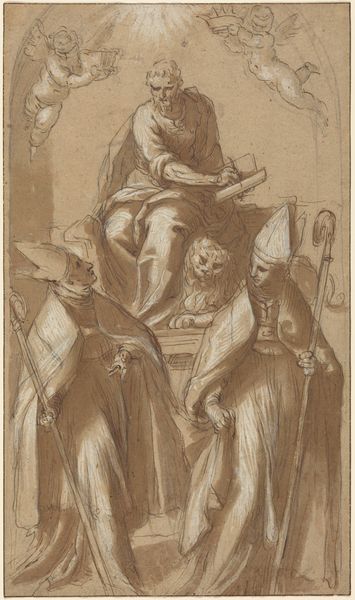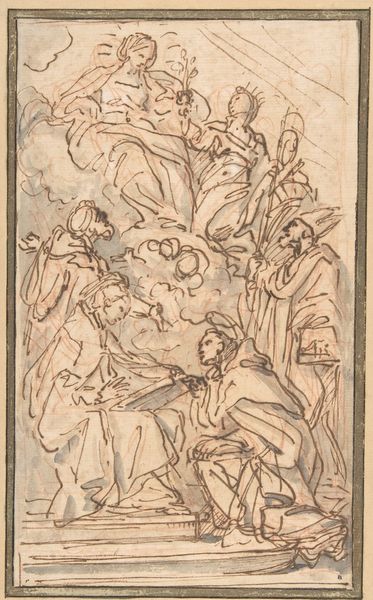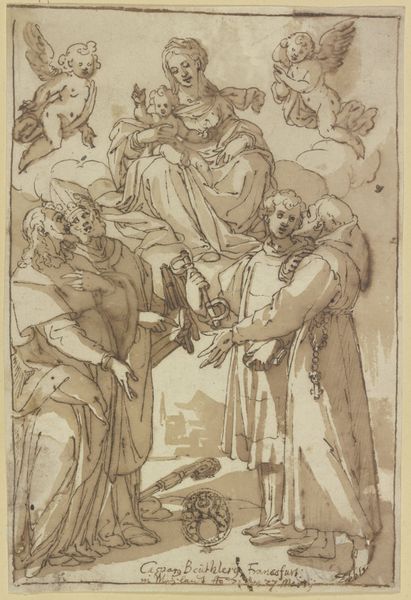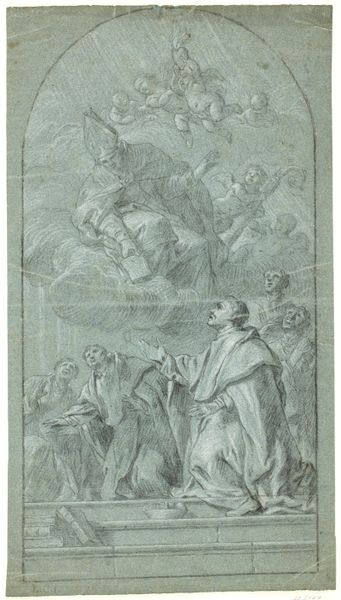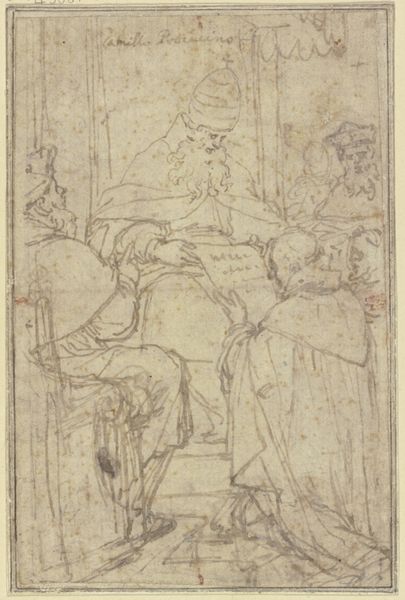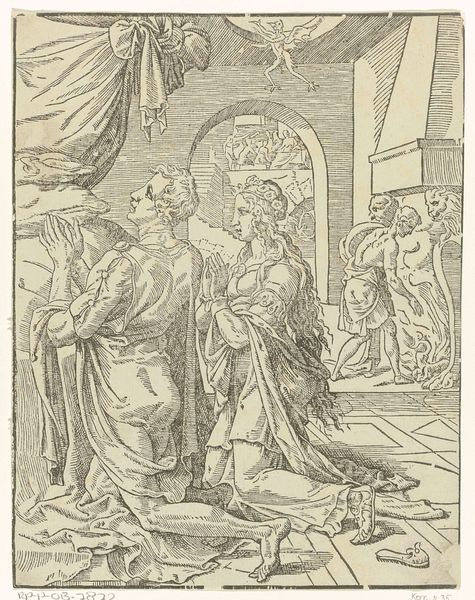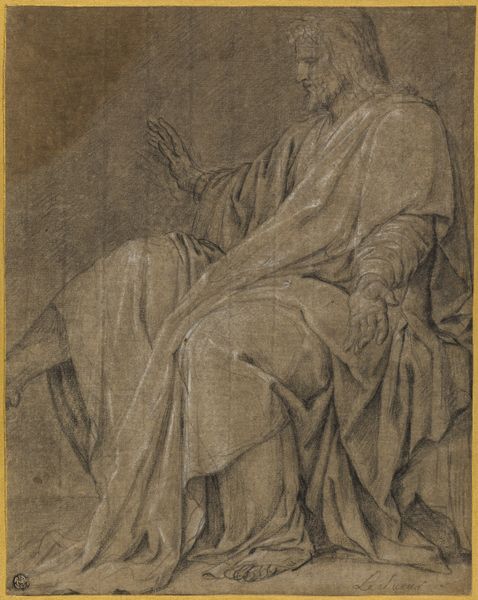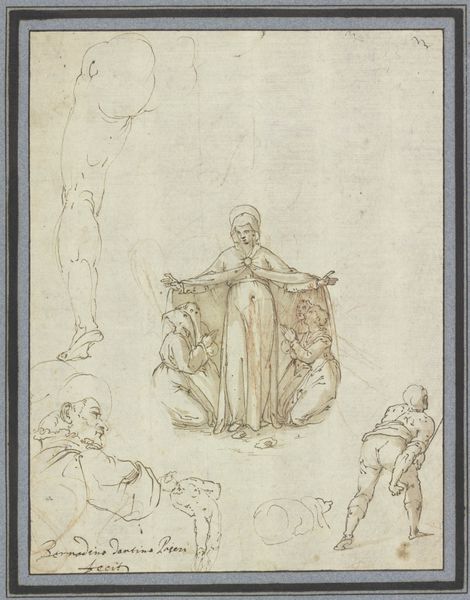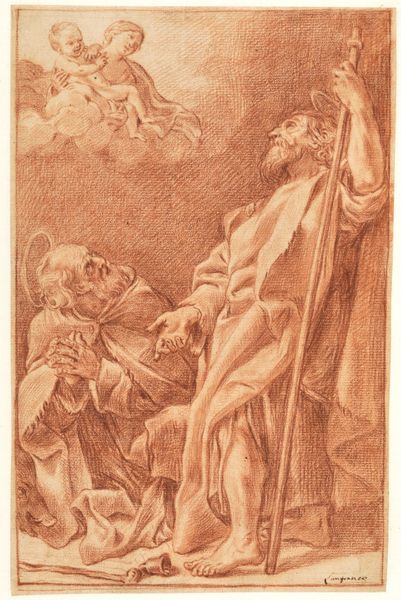
drawing, ink
#
portrait
#
drawing
#
baroque
#
figuration
#
ink
#
history-painting
#
academic-art
Dimensions: 255 mm (height) x 189 mm (width) (bladmaal)
Editor: Here we have "A Sculptor in his Workshop" by Francois Perrier, created sometime between 1625 and 1649 using ink. It feels... surprisingly casual for a Baroque piece. How would you interpret this work? Curator: Well, let's start by acknowledging that Perrier, although a French artist, was deeply influenced by his time in Rome. It's not just a neutral depiction of a sculptor, but perhaps a statement about the intellectual labor involved in artistic creation during a period wrestling with shifting class structures and artistic patronage. Editor: A statement? How so? Curator: Look at the sculptor’s posture, his loose clothing. Compare that to the heroic bust he seems to be gesturing toward, and then contrast it with the rough sketches on the wall in the background. Does it suggest anything about the role of the artist, their status within society? Remember, the Baroque period saw rising tensions between established elites and emerging bourgeois classes. Art became a battleground where ideas about labor, skill, and value were negotiated. Editor: I guess it does highlight a difference... the artist seems more human, less god-like than the sculptures. Was Perrier critiquing the romanticism of the artist figure? Curator: Exactly. Perhaps this is Perrier asking us to reconsider the glorification of artistic genius and instead see the human element. The "genius" might simply be doing a job. Whose voices and labour do you think might be missing from the frame, that would contribute to the context of labour and skill? Editor: I never considered the social context like that before. It reframes the artwork entirely. Curator: And it shows how much an artwork can tell us if we consider not just its aesthetics, but also the social dynamics of its time. Always look beyond the surface to the structures that define these social interactions and power dynamics.
Comments
No comments
Be the first to comment and join the conversation on the ultimate creative platform.
